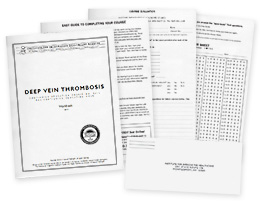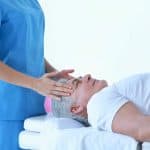Health Forum, a subsidiary of the American Hospital Association on behalf of the American Massage Therapy Association (AMTA), administers a bi-annual poll of hospitals across the United States regarding the programs they offer. The 2006 results of this survey demonstrate that the number of hospitals offering massage therapy has increased by more than 33 percent in a two-year span. As hospitals represent the epitome of allopathic medicine, this surge represents how alternative medicine, and specifically massage therapy, has been accepted into mainstream health care in the United States.
This survey discovered that massage therapy is among the most popular complementary and alternative medical therapies offered in hospitals. Of the 1,007 hospitals that responded to the survey, 82 percent offering complementary and alternative medicine include massage among their care options. Seventy-one percent of hospitals with massage therapy programs offer massage for patient stress management and comfort, while 67 percent claim the utilization of massage therapy for pain management. Fifty-two percent say they provide massage for cancer patients and 67 percent offer massage to their staff for stress management. According to the survey, hospitals also use massage therapy for:
- Improving mobility and movement (52 percent)
- Pregnancy (51 percent)
- Part of physical therapy regimen (50 percent)
- Hospice or end-of-life care (37 percent)
- Edema (33 percent)
- Infants (24 percent)
- Post-operative care (25 percent)
- Pre-operative care (17 percent)
The effectiveness of massage therapy in alleviating the symptoms of a number of medical conditions has been demonstrated in on-going research and clinical studies. Massage has been proven effective in boosting the body’s immune system, reducing blood pressure, alleviating post-operative pain, easing alcohol withdrawal symptoms and reducing chronic back pain. Recent studies have also associated massage therapy with substantial relief of symptoms in cancer patients, such as pain, fatigue, stress, anxiety, nausea, and depression.
The following four suggestions will help bodyworkers prepare for working within a hospital environment:
- Learn an energetic modality. The medications and conditions belonging to many hospital patients place circulatory and deep tissue restrictions on bodywork.
- Become familiar with as many massage contraindications as possible. Since communicating with physicians is a must within a hospital setting, speaking intelligently about safety precautions will only improve the trust both the patient and physician have in your services. Additionally, knowing when to stop and provide a referral to a doctor helps you uphold the ‘do no harm’ oath. The Institute’s Deep Vein Thrombosis distance learning course is an excellent step along this path.
- Study your client’s medications. Pharmaceutical drugs can significantly impact massage, and a majority of hospital patients take medications. Studying your client’s medications can help you make educated choices for the ideal massage strokes.
- Protect yourself emotionally. Some very intense situations can arise when working in a hospital setting. You may work with people who are very sick and have extreme depression. Read the article, The Four Steps of Energetic Separation for Bodyworkers to become familiar with maintaining boundaries when working with this population.
As the number of hospitals offering massage therapy increases, so does the opportunity for employment in these well-established institutions. The skills to succeed as a hospital massage therapist lay only in the concentrated effort to enhance one’s education. Whether consulting relevant articles, enrolling in continuing education courses or referencing a book or guide, the resources available to bodyworkers to help meet the increasing demand for hospital massage therapists are plentiful.
















